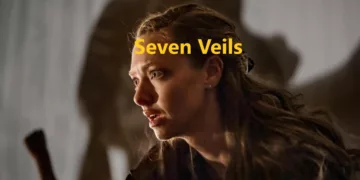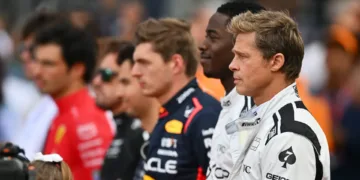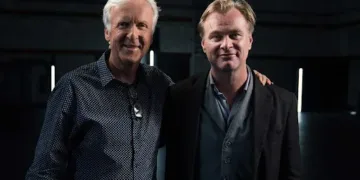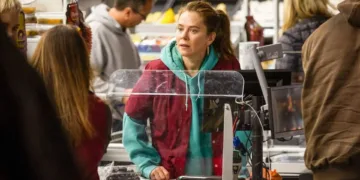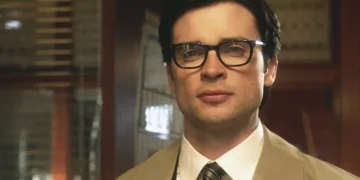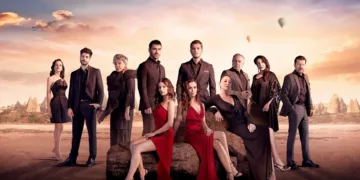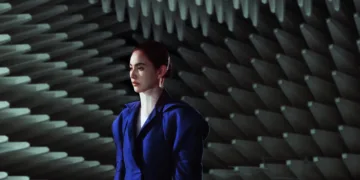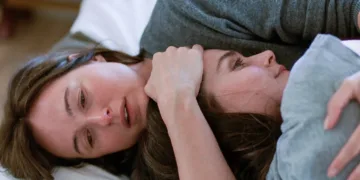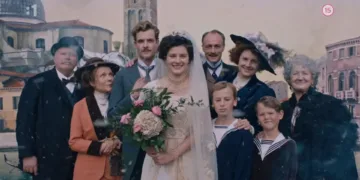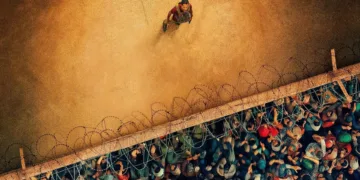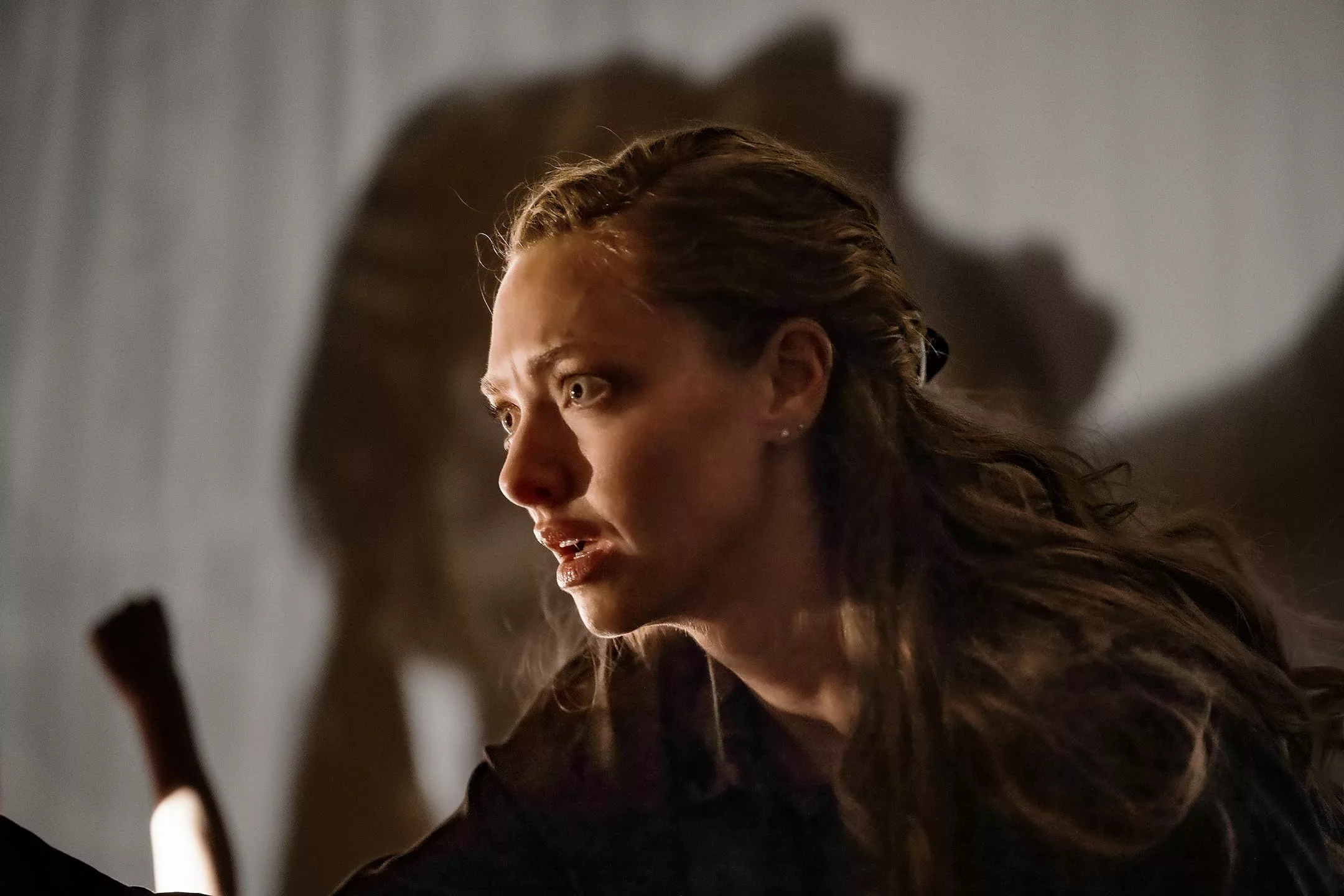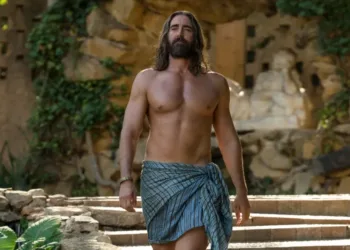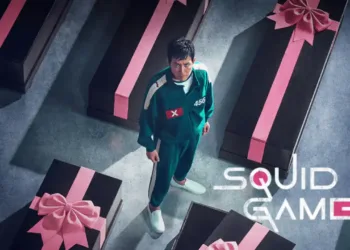With his signature cerebral and detached filmmaking style, Canadian auteur Atom Egoyan invites audiences into another of his intricately layered worlds with Seven Veils. As with his past melancholy explorations of alienation and trauma, Egoyan once again probes provocative themes like the ambiguity between art and life.
Centered around an opera director named Jeanine tasked with staging a remount of Richard Strauss’s 1905 opera Salome, Seven Veils finds the young woman wrestling with her own troubled past and complicated connections. Jeanine must put her stamp on the familiar production while reconciling painful memories of inappropriate childhood filming by her late father, whom her own mentor repurposed without consent in an earlier staging of Salome.
As Jeanine contends with ruptures in both her creative endeavor and fraying family bonds back home, Egoyan weaves together a hypnotic meditation on consent, exploitation, and the elusive divide between sincerity and deception. With his fractured-glass filmmaking, Egoyan offers no easy answers amidst the veils. Yet for those attuned to his wavelength, Seven Veils promises to be a bracing, if chilling, look behind the curtain.
Reclaiming Salome, Reckoning with Trauma
At the heart of Seven Veils lies Jeanine’s complex mission to remount a production of Richard Strauss’s provocative opera Salome, the tragic tale of a Judean princess who performs the legendary Dance of the Seven Veils to bargain for the decapitated head of John the Baptist. Still reeling from the sudden death of her former mentor and lover Charles, an esteemed director who had staged his own controversial version years earlier, the young and relatively inexperienced Jeanine is tasked with putting her stamp on the familiar work.
Right away, tensions simmer between Jeanine and the opera company’s executives, who seem intent on preserving Charles’s original vision. But the production holds deeply personal meaning for Jeanine that transcends mere creative differences. Through unsettling flashbacks, we learn that Jeanine’s own father had obsessively filmed her as a young girl, including eerie footage of her walking blindfolded through the woods. To Jeanine’s horror, Charles had covertly drawn on those traumatic childhood images for his staging of Salome years before.
Outside the rehearsal halls, Jeanine contends with ruptures on the home front as well. Video calls reveal growing suspicions that her husband Paul is having an affair with her elderly mother’s caretaker. And her mother’s advancing dementia only exacerbates fraught memories of past paternal abuse.
As opening night looms ever closer, Jeanine finds herself at the center of a perfect storm, professionally and personally. Will she reclaim her past and put her own imprint on Salome? Or will long-buried traumas rise up to claim her instead? Egoyan leaves the veils dangling until the final curtain.
Probing the Ethics of Art and Power
True to form, Egoyan utilizes Seven Veils as a vehicle to probe his characteristic preoccupations, from the porous boundaries between art and life to the ethics of artistic license. Most pressing here is Jeanine’s quest to reclaim not just the staging of Salome itself but her own traumatic past that had been appropriated without consent.
In dramatizing Jeanine’s horror upon realizing her childhood footage was incorporated into Charles’s version, Egoyan provokes vital questions around artistic rights and wrongs. How far can or should an artist subjugate real-life suffering for their creative ends? And who gets the final say over such personal material being repurposed on the public stage?
These themes resonate deeper in light of the opera’s plotline as well. Salome’s climactic Dance of the Seven Veils sees the Judean princess use her body and dance as bargaining chips to satisfy her dangerous obsession with John the Baptist. Through this iconic sequence, Egoyan explores the gray areas between exploitation and agency when sex and power entwine.
And by implicitly linking Jeanine’s journey with Salome’s across temporal lines, Seven Veils suggests cycles of trauma reproducing themselves across generations. One senses both women trying to wrest back control over their bodies and stories through the very same male-dominated channels that first objectified them.
Yet as with his chilly directorial style, Egoyan denies easy judgments or catharsis. Seven Veils breathes in ambiguities. Like Jeanine perpetually watching the opera take shape from the rehearsal bridge, suspended between spectator and participant, the audience occupies an uneasy in-between space. In the end, we’re left to judge for ourselves where moral fault lies amidst the jumbled veils of art and life, violation and vengeance.
Dive into the bizarre true crime tale of survival in our Dickweed review. Follow Michael’s harrowing ordeal of abduction and brutality, directed by Jonathan Ignatius Green. Click here to read about this gripping and unsettling story that will keep you on the edge of your seat.
Egoyan’s Clinical Precision Anchored by Seyfried
As longtime devotees can attest, Egoyan directs his films with an almost clinical detachment, favoring simmering unease over cathartic outbursts. By avoiding overt displays of emotion, he heightens the discomfort pulsing under Seven Veils’s placid veneer. It’s a rigorous demand on his performers, who must convey churning psychological depths with subtle gestures and glances.
Fortunately, Egoyan has a willing vessel with Amanda Seyfried reprising their collaboration from 2009’s Chloe. Where a less disciplined actress may have tilted into hysterical terrain given the heavy scenarios, Seyfried captivates as Jeanine by playing mostly against outsized reaction. She allows us to read the shadows of trauma behind her inscrutable mask, flickers of anguish revealed as she tries marshaling professional poise. It’s a compelling study in understatement.
Bolstering the film’s credibility within operatic circles, several actual singers from Egoyan’s recent Salome production at the Canadian Opera Company appear as fictionalized versions of themselves. While Ambur Braid as Salome and Michael Kupfer-Radecky as the lecherous John the Baptist neatly satirize their ego-fueled world, Egoyan’s integration of behind-the-scenes documentary footage grounds Seven Veils in a reality beyond the film frame.
In braiding together these layers of invention and authenticity, Egoyan orchestrates a uniquely unsettling vision. Peel back one veil, and you’ll find another.
Sumptuous, Menacing Visuals Mirror the Messy Psyche
From its lush opera house setting to Jeanine’s subtly oppressive childhood home, Seven Veils impresses technically with visuals that externalize psychological unease. Phillip Barker’s sumptuous production design nods to German expressionism in its off-kilter geometries and moody shadows that seem to mock Jeanine from every corner.
Lingering over the decadent textures of the rehearsal halls’ polished woods and velvet curtains, Egoyan’s meticulous eye hints at dark machinations humming beneath such gilded finery. Paul Sarossy’s cinematography utilizes precise shafts of light and color to underscore emotional tones within scenes, bathing Seyfried in sickly greens during particularly tense family video calls. Shrouded in such layered menace, Jeanine appears trapped even in her own potential sanctuary.
Nowhere does this visual symbolism crescendo more evocatively than in the much-touted Dance of the Seven Veils sequence. Backlit by rippling red silhouettes of her own childhood footage, Jeanine watches her traumatic past and Salome’s legend crash into each other under the spotlight. For all its stagy artifice, this arresting tableaux offers perhaps the film’s most piercing psychological nude portrait, with Sarossy’s roving camera subtly echoing the guilty male gazes strip-mining feminine trauma across epochs.
In every fastidiously composed frame, we feel subjective visions and realities losing distinction—the film incarnated.
An Ambitious Mixed Bag from Egoyan
In the end, Seven Veils stands as an ambitious, if imperfect, entry in Atom Egoyan’s intimately cerebral filmography. While his signature detachment aptly conveys simmering traumas beneath the surface, the film’s wandered attention dilutes its provocative voice. Subplots around production romances and backstage antics distract more than deepen.
Nevertheless, Egoyan deserves credit for tackling such a tricky tapestry of themes around appropriation, objectification, and the dangers of unresolved pain recycling through generations. Even when heavy-handed, that he approaches such contemporary societal demons at all signifies his efforts staying responsive to the current moment.
And with Amanda Seyfried turning in a compellingly understated performance as his surrogate director plunged into art-life chaos, Egoyan remains a filmmaker capable of seducing talent, just like Salome herself. For all its flaws, Seven Veils perhaps best works as a conceptual dance piece beholden only to Egoyan’s peculiar vision. The kind of esoteric high-art custom tailored to festivals like Berlin, where free-flowing interpretations move to their own rhythm, the beat of the artist’s inner psyche externalized for good and ill.
So rather than definitive statements, let us conclude with questions. Could a more disciplined editor have brought finesse to such an unwieldy mammoth? Certainly. Would the central mother-daughter trauma have resonated deeper absent the operatic excess? Perhaps. But would it still resemble an Atom Egoyan joint? Undoubtedly not. And the sumptuous shadows say he has no interest in stepping into the light just yet.
The Review
Seven Veils
While occasionally sinking under its own weighty ambitions, Seven Veils slakes devoted cineastes with another mesmerizing puzzle box exploring the director’s pet themes. Even when clumsy, Egoyan’s clinical precision and visual artistry entrance. For all its veils, vital questions about appropriation and trauma do pierce through.
PROS
- Strong central performance by Amanda Seyfried
- Distinctive and visually stylish direction by Atom Egoyan
- Explores thought-provoking themes around trauma and appropriation
- Effective integration of real operatic performances and footage
- Strong production design and cinematography
CONS
- Overly complex, distracted narrative with too many subplots
- Some awkward dialogue and stilted acting from supporting cast
- Mishandles and underdevelops some key scenes and themes
- Cold, clinical tone may distance some viewers
